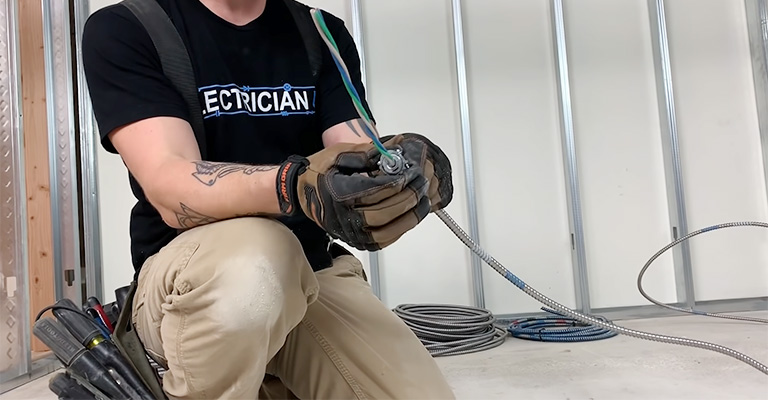When it comes to electrical installations and wiring projects, ensuring safety and compliance with electrical codes is of paramount importance.
It is not recommended to use Romex in conduit because it creates more heat. It’s probably cheaper to use insulated wire instead of conduit.
The Romex cannot breathe when it is placed inside conduit and retains too much heat.
As a homeowner or DIY enthusiast, you may have heard about the different types of electrical wiring, such as Romex and conduit, and wondered whether they could be used interchangeably.
Can You Run Romex In Conduit?
Metal conduit should not be used to run Romex, since the wire may overheat. You might be in a confusion right now because you won’t be able to find the code which states this.
As the myth goes, when the outer skin is removed from the NM-B wire, it no longer has any ANSI markings, negating the whole purpose of using ANSI.
Even though the individual conductors of NM-B are rated at 90°, the sheath already degrades it to 60°. NM wire cannot be put without its sheath.
It is the same for MC cable and any other cable with ANSI markings on the sheath rather than the conductors.
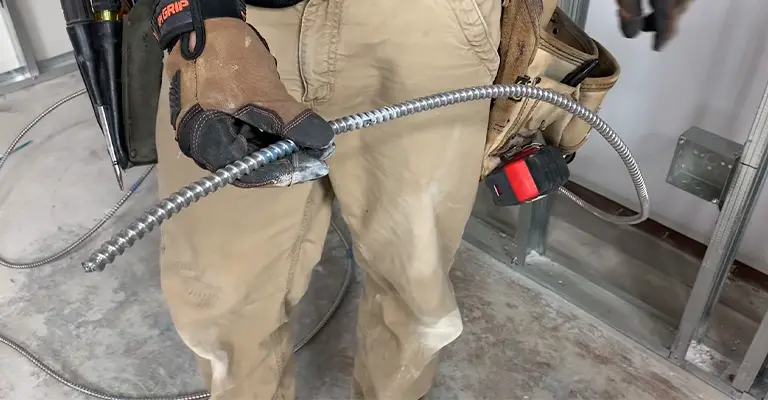
Conduit is a good place to put NM cable. Indeed. The NEC specifies that conduit must be used if it is to be protected from physical damage. Chapter 9 of the National Electrical Code 2011 also covers calculating conduit fill considering cables.
The conduit’s location will determine whether that is the case. An underground conduit (or in any other damp or wet area) is not permitted to be run with NM cable. It’s technically feasible, but it won’t make much difference.
Insulation is usually used for short distances to protect it from physical damage. For example, in a garage or unfinished basement, from the switch or outlet to the ceiling (the floor joists above).
The outer jacket of Romex wire is designed to protect the insulation of the individual wires from damage when it is run as is. So, Romex wire is made to be run as it is.
It isn’t a standard practice in the industry to use conduit for Romex installations, so the NEC does not include specific regulations regarding its use.
Occasionally this method is used, but usually in hazardous conditions such as exposed exterior feeders for temporary power or equipment power supplies, but if the conduit is installed to protect the entire circuit, individual insulated wires can be installed for this purpose more economically and efficiently.
Why Can’t You Run Romex In Conduit?
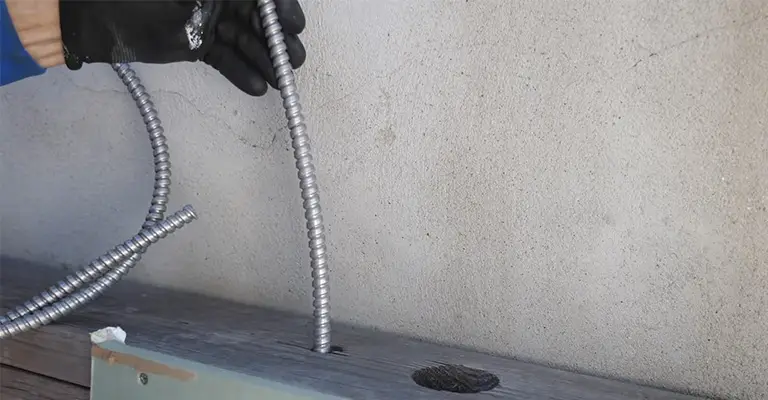
Having an outer jacket on Romex wire provides additional protection for the insulation of each individual wire, which is why it’s designed to be run as is.
Since conduit isn’t a standard industry practice, the NEC doesn’t provide specific instructions for its use during Romex installation.
While it can be done in certain situations, usually under hazardous conditions, such as with exposed exterior feeders for temporary power or power supplies for equipment, it is more cost effective and simpler to run individual insulated wires for this purpose if conduit is used to protect the entire circuit.
There is no explicit rule against it, but if you plan on following code, you must size your conduit so that you have a fill less than 40% measured across the Romex’s widest dimension, so you will need a much bigger conduit than individual wires.
Additionally, you need to consider that Romex is difficult to pull around bends in conduit, since the flexible outer jacket will resist bending around corners, and you will only be able to bend to 180 degrees.
Heat dissipation is another issue that may arise. By adding a jacket inside the pipe, heat created by current flowing through the wires will dissipate more quickly, so you may have to lower the amperage used for your conductors.
The Romex cable will generate more heat in the conduit, so it’s not advised to put it in the conduit. Using a conduit can be a better option than running insulated wires.
The price is probably lower. It is not possible for Romex to breathe inside the conduit, so it retains too much heat.
It’s A Nightmare To Pull
The NM (Romex) wire already exists as a solid wire, except in large sizes; now, it consists of 3-4 wires bound together.
NM gets twisted all the time (it always does), and if it drags in those places, it really drags around the elbows with a radius of maybe 14″.
It is simply a stiff, miserable pull – enough to “put you off conduit forever” – which is too bad because conduit is a beautiful method of wiring when the wire is stranded.
It is more likely that you will damage this stiff cable if you pull it. In addition, the name “cable in conduit” is often used by a newbie who has no idea wire comes in other forms. Consequently, more damage can occur.
It Requires a Ridiculously Large Conduit
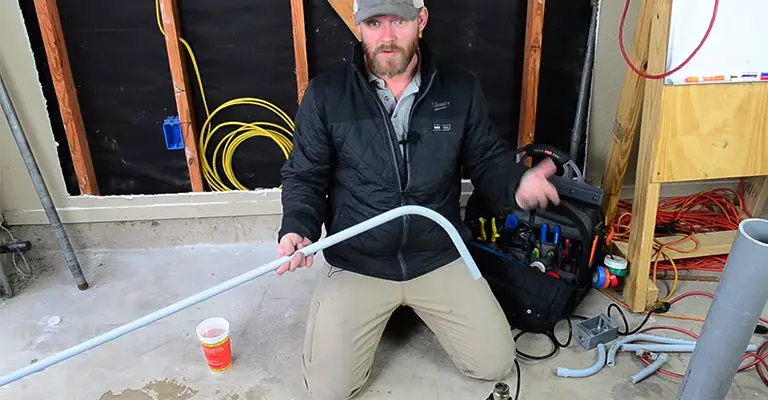
Still, conduit fill rules must be calculated and adhered to, which are very punishing for cable. In most cases, the cable is elliptical, and the rules state you treat it as a circular wire of the largest dimension.
- There is a maximum of 53% conduit fill for each “wire.” Specifically, the conduit ID has to equal 137% of the large cross-section of the cable. Well, that’s not such a bad thing, but…
- For two “wires”, you can only fill 31% of the space. That’s to keep the wires from binding. It means that the conduit ID must be at least 2.54 times the cable’s large dimensions.
- Whenever you have three “wires”, you can fill them with 40%. To meet the minimum requirement, the conduit must be twice as wide as the cable (at three wires) and should be larger when there are more wires.
Suppose someone wanted to squeeze three #6 cables through a 1″ conduit. This is easy peasy if six individual #6 THHN wires and three bare #10 grounds are involved. However, with three #6 UF cables, the conduit needs to be 3″.
This is certainly possible, but it will require an enormous conduit and be challenging to pull.
Safety
There’s a good reason why many contractors choose to use conduit. Cables with Romex connections cannot be protected with PVC sheaths. As far as the other two conductors are concerned, everything seems to be fine.
It’s only the copper conductor that’s vulnerable. A dangerous location could cause oil and gas to penetrate the jacket, harming the ground wire. Protecting the wire with a conduit is therefore advisable.
The wires do not all need to be run through a conduit. Cables with metal cladding are tough enough to withstand rugged conditions without wearing out. If not, conduits would be the best option.
Location
Are you planning to install the Romex in a particular location? If you plan to run non-metallic wire outdoors, you should use a weatherproof conduit. Furthermore, underground cables must contend with pests and humidity due to their location.
Indoor wiring is safer. Using a conduit, homeowners can run Romex indoors. Neither the NEC nor the Bureau of Standards prohibits this practice. Nevertheless, you need not do so.
A wise decision can only be made based on informed knowledge. Running a wire through conduits is a pain because they are challenging to manage.
The durability of your lines will be extended with the use of a pipe. Their longevity will be much longer than that of exposed wires.
About Romex Cables
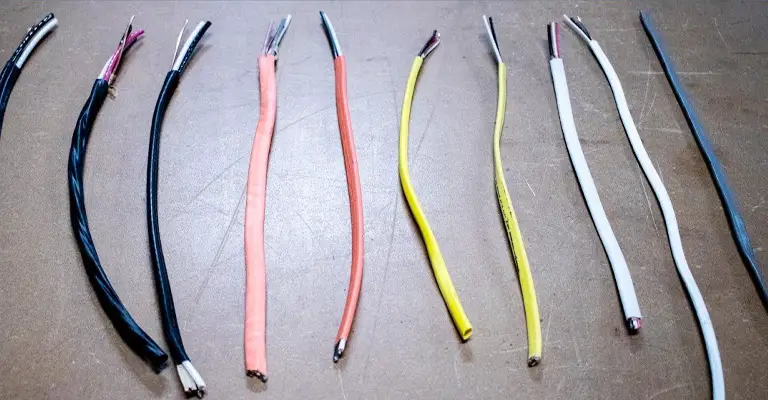
Romex is the brand name given to a non-metallic sheathed electrical conductor among home branch wiring. Typically, it is used in the wiring of homes.
Under the National Electric Code, Romex cables are classified as non-metallic sheathed cables.
This type of cable has a non-conductive, flame-resistant, and moisture-resistant coating. Because of this, they can be used in humid environments, such as basements.
On the inside, wires are bundled in paper, while the outer sheathing is woven rayon, an upgrade to plastic. The inner paper winding prevents the wires from sticking together after they are heated.
Additionally, the wires are flexible during installation because of this method. The sheathing has three colors representing different gauges: 14, 12, and 10. Typical circuits with 15-amp power use white sheathing of 14-gauge wire.
Circuits such as these power appliances such as fans, lighting, laptops, and mobile phones. Typically, 20-amp circuits contain a 12-gauge wire enclosed in yellow sheathing.
Air compressors and automobile charging systems can benefit from these circuits since they handle 2,500 Watts. Electrical distribution lines in commercial and industrial buildings use these circuits as standard.
It represents the orange sheathing of a 30-amp circuit made up of 10-gauge wires. They provide power to deep freezers, microwaves, and space heaters, which are all power-hungry appliances.
It is necessary to comply with specific regulations when using Romex cables. Could you please explain these regulations? To find out more, keep reading.
National Electric Code (NEC) Regulations For Romex Cables
The National Electrical Code (NEC) delineates criteria for safe electrical design, installation, and inspection to promote the safety of people and property.
As far as Romex conductors are concerned, the following NEC regulations apply:
- Ensure that your fittings, junction boxes, and device boxes are shielded, secured, and clamped to your cables.
- Be careful not to damage the cables with support devices like bent nails or overdriven staples.
- NMC and NM cables should not be longer than 4.5 feet and should fit into junction boxes within 12 inches. In contrast, cables that fail to comply with these criteria are prone to sagging and damage.
- Extension cords or appliance wires should not be replaced with these speakers. They’re suitable for permanent wiring in your home.
The Bottom Line
Using Romex wires in conduits isn’t explicitly forbidden by code. Still, you need to size the conduit to have a fill of less than 40% measured across the widest dimension of your Romex if you plan on following the code, so you’ll need a much larger conduit than an individual wire.
Additionally, you should consider the difficulty of pulling Romex around bends in the conduit due to its flexible outer jacket, which causes a lot of resistance when bending around corners.
The dissipation of heat is another potential problem. Adding the jacket inside the pipe will reduce the heat dissipating as current flows through the wires, which may require downgrading the conductor’s amperage to compensate.

